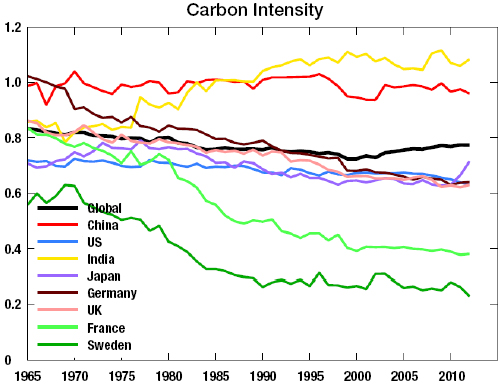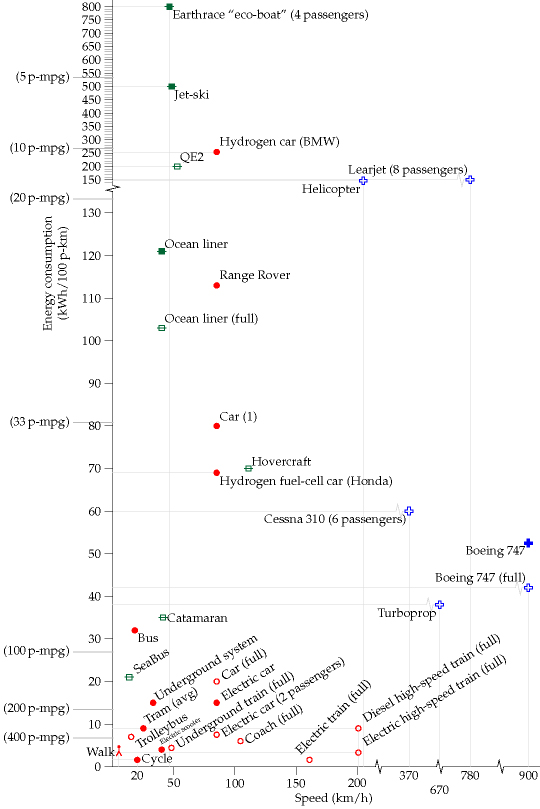Mahurangi Action motorway condition 36c viii

Clean–Green Sweden: Through the intelligent pairing of nuclear and hydro power, Sweden is leading the way in decarbonising its electricity. Aotearoa, meantime, only talks the talk, whilst wantonly burning Indonesian coal on the banks of the Waikato River. chart Dr James E Hansen Senate testimony 13 March 2014
I’s not, in fact, the harbour’s biggest threat since deforestation.
The proposed Pūhoi–Warkworth motorway is only the biggest proximate threat. The biggest threat of course—the existential threat—is rampant global warming. The entire litany of miseries in store from that cause are all-too-easily imagined and don’t bear repeating here, but the projected more frequent and intense heavy rainfall events are precisely what the Mahurangi Harbour with its already elevated sediment accumulation rate does not need.
When Mahurangi Action was formed formed forty years ago, as Friends of the Mahurangi, two threats concerned the more thoughtful, not least of all its founding chairman, John Gifford Male. The proximate threat was wastewater. The town council was planning a long-overdue replacement for a system that allowed virtually untreated sewage to flow into the Mahurangi River from what is now the lovely Lucy Moore Park. But while proper treatment was greatly welcomed, there were grave doubts as to whether the capacity of the proposed plant was adequate, particularly during periods of high rainfall when Warkworth’s notoriously leaky sewers also acted as stormwater drains, and still do today to some extent.
But it was the second threat that particularly drove John Male, that of a third, nuclear, world war. After serving in North Africa—he was a noted war poet—Male worked for the United Nations in the human rights division, initially as Eleanor Roosevelt’s private secretary. Later, from his Mahurangi home, scouted for him by Rex Fairburn a decade earlier, he became the founding chairman of the then titled New Zealand Foundation for Peace Studies, earlier in the same year that Friends of the Mahurangi was formed.
In the 1950s and early 1960s, the threat of global nuclear war was keenly felt, with the Campaign for Nuclear Disarmament rallying up to 150 000 for a single march in the United Kingdom. But nuclear war was only ever a threat. In contrast, global warming is a promise of suffering and death—currently an estimated 400 000 die annually, with a further 4.5 million deaths attributed to the carbon economy—3.1 million of those deaths due to indoor smoke. The threat, however, is that without a rapid reduction of greenhouse gas emissions, the death toll will reach apocalyptic proportions. Even by 2030, the Development Assistant Research Associates study alluded to estimates that annual global warming deaths will exceed 600 000, while a World Health Organisation report, published yesterday, has air pollution alone responsible for 7 million deaths per year.

Energy Requirements of Different Forms of Passenger Transport: Vertical coordinate shows the energy consumption in kWh per 100 passenger-km. The horizontal coordinate indicates the speed of the transport. ‘Car (1)’ is an average UK car doing 33 miles per gallon with a single occupant. ‘Bus’ is the average performance of all London buses. ‘Underground system’ shows the performance of the whole London Underground system. The catamaran is a diesel-powered vessel. Indicated on the left-hand side are equivalent fuel efficiencies in passenger-miles per imperial gallon (p-mpg). Hollow point-styles show best-practice performance, assuming all seats of a vehicle are in use. Filled point-styles indicate actual performance of a vehicle in typical use. chart Sustainable Energy: Without the Hot Air
As detailed recently by Dr James Hansen, transportation is proving resistant to efforts to reduce carbon density. France, by embracing nuclear power was able to spectacularly lower its carbon density, over an eight-year period, only to stall thanks to a continuing heavy reliance on motor vehicles. Sweden, meanwhile, has come closest to decarbonising, by pairing nuclear power with hydro, such as Aotearoa should indubitably be doing, if it was to honestly walk the clean–green talk. Nuclear is the prime proven provider of clean baseload power, while hydro is perfect for responding to peaks. The latter is the only energy storage likely to be economic, despite eye-watering research-and-development spending—US$255 million is spent annually by the United States’ advanced energy research projects agency alone.
Rather than continuing to wait for a carbon-free silver bullet, much can be done immediately to reduce dependency upon fossil-fueled road transport. The low-hanging fruit is simply to make better use of buses. The Northern Busway is a brilliant example of where quick affordable bus travel trumps independent car use, bogged down in rush-hour motorway traffic. It is also ripe for electrification. Elsewhere, only a small tilt of the playing field is required to make bus transport more attractive than car. An example is access to regional parks. At present Long Bay Regional Park has to be closed periodically when the park becomes full, but not with people but with cars. The solution is to charge for car parking and to not charge for bus transport into the park.
The regional parks of Wenderholm, Te Muri and Mahurangi West could all be accessed via the proposed Mahurangi Coastal Trail, and at a fraction of the cost of upgrading the ridge farm track that is much more valuable as part of Te Araroa, the national walkway. But even beyond Makaurau’s metropolitan transport system, weekend and public holiday bus services could be scheduled to, for example, Tāwharanui Regional Park.
Such is the chasm between popular understanding of it and the enormity of global warming, that more than half the very few submissions received are in support of the proposal to spend the better part of a billion dollars on a 18-kilometre stretch of motorway locking in further greenhouse gas emissions. However, the Environmental Protection Authority process is not a popularity contest, but a fast-tracking process that is extremely unlikely to find against one of the government’s Roads of National Significance projects. What the board of inquiry will do, almost certainly, is to ensure that the evidence of expert witnesses is reflected in the conditions imposed.
Although not expert testimony as such, Mahurangi Action’s submission suggested a condition:
Should the board of inquiry approve the proposal, a condition might be that the project should source indigenous plants raised by the five-times more cost-effective, and more robust, open-ground (forestry-style) method that has been trialled in the Mahurangi and Lake Taupō catchments as a direct consequence of the realisation of the scale of indigenous planting (possibly in the order of 10 million stems) required to address the Mahurangi Harbour’s elevated sediment accumulation rate.
Immediately before and once since objections closed, Mahurangi Action has met with members of the New Zealand Transport Agency’s ‘Further North’ motorway team. Despite the society’s blunt stance that the board should decline the proposal, interest was expressed in the potential for deploying indigenous plants raised by the open-ground nursery method, and at the second, mediated meeting, it was agreed that a condition be added, which, as included in the rebuttal evidence reads:
Designation Condition 36c viii Consideration of the suitability of sourcing planting raised via the open-ground forestry method, including availability and cost-effectiveness
Although consideration is no guarantee of deployment, if the board of inquiry approves this proposed condition, it will be a major step towards the rehabilitation of the open-ground nursery method—on motorway projects elsewhere, open-ground plants have been specifically excluded. It is suspected that the cost of planting needed, following the proposal to move eight million cubic metres of earth and rock, would be eye watering, and prospects of plants at a fifth of the cost, and with healthier root systems, is surely hard to ignore.
If the project be approved, it is to be hoped that open-ground plants will be deployed on a sufficiently large scale to establish definitively their competitiveness, compared with plants raised in planter bags, pots or in root trainers. Ideally, the planting design would be scientifically designed, just as were the Mahurangi and Taupō trials, so as to enormously swell the already valuable accumulation of data amassed.

A Movement Amassing: Global nuclear annihilation was only ever a threat, whereas death and suffering on an unprecedented scale is a promise, guaranteed by business-as-usual dependence upon fossil fuels. While protest on a Campaign-for-Nuclear-Disarmament scale has yet to be seen, this march on their presidential palace by Typhoon Haiyan victims and supporters hints of an inevitable mobilisation—this single extreme weather event probably killed more than 7000 and maimed or injured nearly 30 000. image Associated Press
There is every indication that the attenuation measures planned by the New Zealand Transport Agency could leave the Mahurangi catchment in better condition than it is currently. For example, considerable areas of exotic forest would be retired, and while exotic forest can generate less sediment than pasture, much depends of the skill and care of the forester, and on luck—whether extreme rainfall events hit during the extraction and replanting phase. But the same is true for the proposed project. While the odds are long for a 50-year return or worse event striking during peak earthwork period, the extra impact on the Mahurangi Harbour could prove crippling to its benthic fauna.
Ex-tropical cyclone Lusi might have seemed a damp squib to most, but those who watched her progress closely were aware that the attendant rain was concentrated wholly to the west of the eye of the storm, perhaps due to wind shear. Consequently, a sobering deluge of rain was dumped offshore into the Tasman, along the coast of the North Island before coming ashore at Nelson. While the proximate cause of landslides can frequently be ill-advised human activity, the Washington state mudslide is a ghoulish reminder that the warmer the climate, the greater is the weight of water vapour that can be held aloft, until it rains.
Today’s children, when spending a lifetime battling an increasingly cruel and unforgiving climate, will struggle to forgive today’s politicians and voters so consistently unresponsive to the clarion call by climate scientists to decarbonise. They will struggle to understand why their parents and grandparents believed it was rational to build motorways mostly for the benefit of people to drive to centralised places of work, when the internet and fibre optics had long since made it more rational to move the work to the people, not the people to the work. They will struggle to understand why today’s holidaymakers’ recreation revolved around individual transport, when their holidays wouldn’t be holidays unless they are bookended by the shared festive ritual of public transport.
But if today’s children are bequeathed 18 kilometres of fossil-fueled motorway they didn’t need or ask for, hopefully they will also have a legacy from when Aotearoa rediscovered how to plant indigenous forest at scale.
